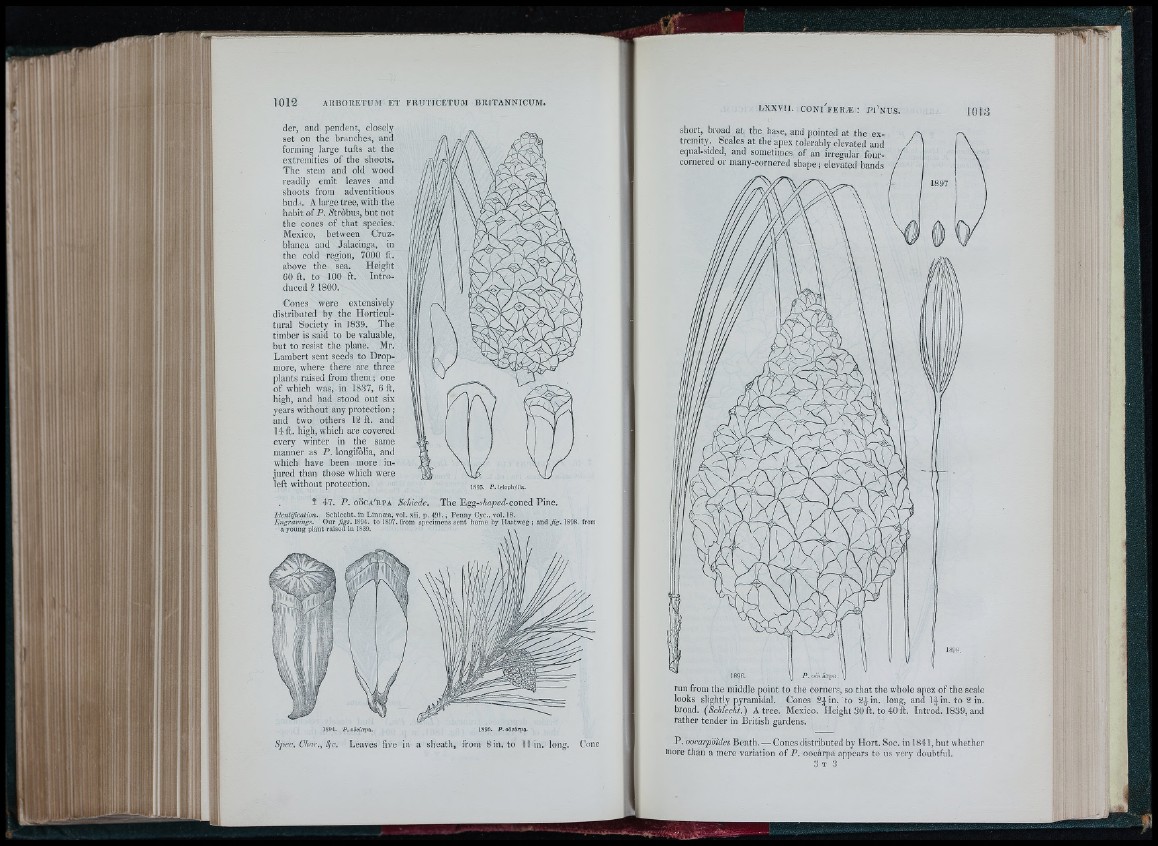
der, and pendent, closely
set on the branches, and
fbrming large tufts at the
extremities of the shoots.
The stein and old wood
readily emit leaves and
shoots from adventitious
buda. A hii’se tree, with the
habit of P. ¿tròbiis, but not
the cones of that species.
Mexico, between Cruz-
blanca and Jalacinga, in
the cold region, 7000 ft.
a!>ove the sea. Height
60 ft. to 100 ft. Introduced
? 1800.
Cones were extensively
distributed by the Horticultural
Society in 1839. The
timber is said to be valuable,
but to resist the plane. Mr.
Lambert sent seeds to Drop-
more, where there are three
plants raised from them; one
of which was, in 1837, 6 ft,
high, and had stood out six
years without any protection ;
and two others 1 2 ft. and
14 ft. high, which ai’e covered
every winter in the same
manner as P. longifòlia, and
which have been more injured
than those which were
left without protection.
1893. P . leiophilla
Í 47. P. o o c a ' r p a Schiede. The Egg-.s/zajoerf-coned Pine.
Identification. Schlecht. in Linnaea, vol. xii. p. 491. ; Penny Cyc., vol. 18.
Engravings. Our figs. 1894. to 1897. from specimens sent home by Hattweg ; and fig. 1
a young plant raised in 1839.
short, broad at the base, and pointed at the extremity.
Scales at the apex tolerably elevated and
equal-sided, and sometimes of an irregular four-
cornered or many-cornered shajie ; elevated bands
1894. P . oScárpa. ISg.O. P.oBcárpa.
Spec. Char.,4c. Leaves five in a slieath, from Bin. to 11 in. long. Cone
run from the middle point to the corner.s, so that the whole apex of the scale
looks slightly pyramidal. Cones 2¿in. to 2Lin. long, and l¿in. to2in.
broad. (Schlecht.) A tree. Mexico. Height 30 ft. to 40 ft. Introd. 1839, and
rather tender in British gardens.
P. oorarpotdes Benth. — Cones distributed by Hort. Soc. in 1841, but whether
more than a mere variation of P. oocárpa appears to ns very doubtful.
3 T 3
li i ■
i
l i i i
1 ü !